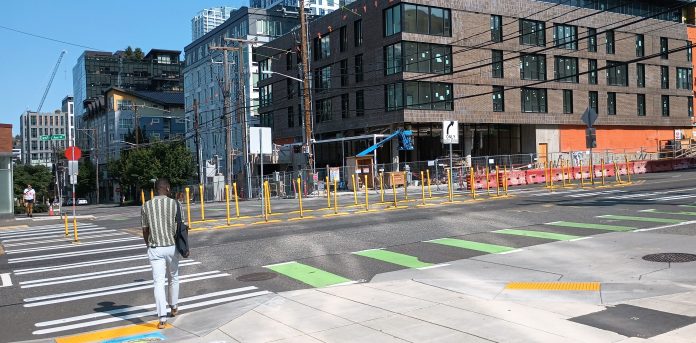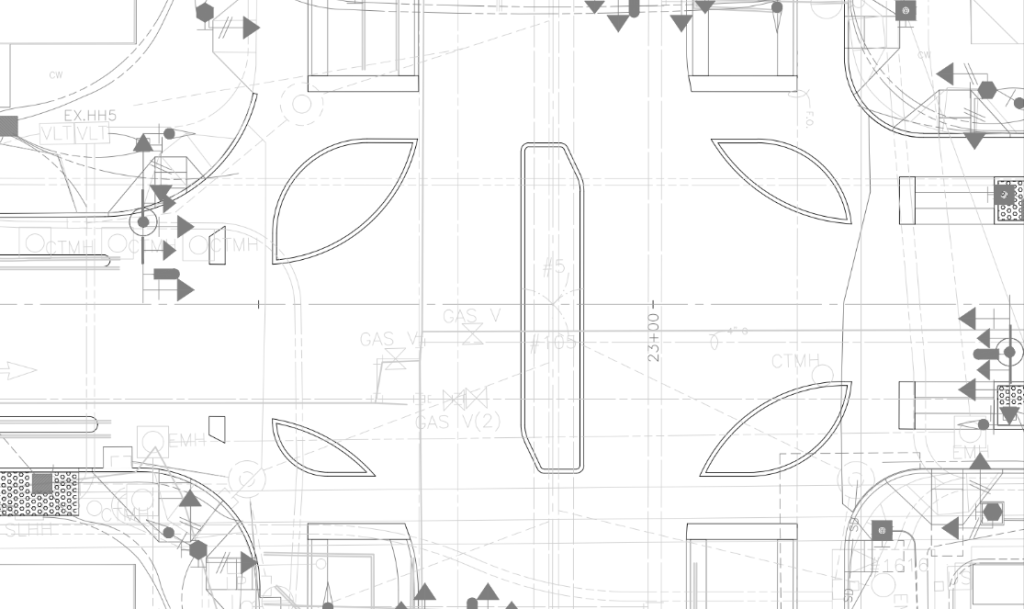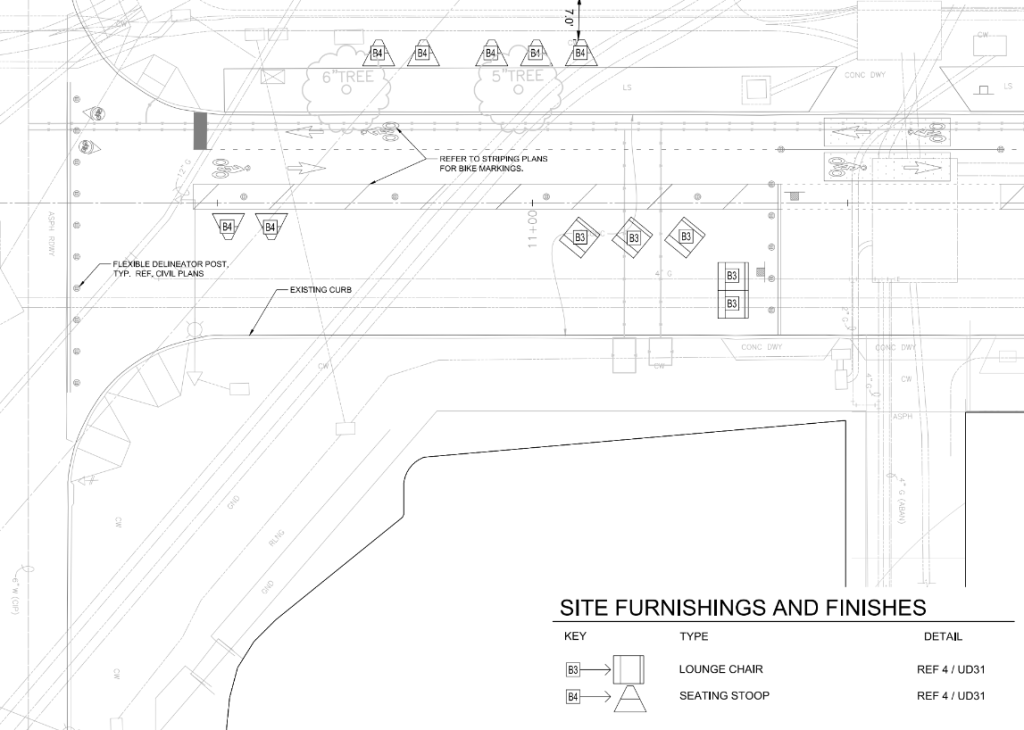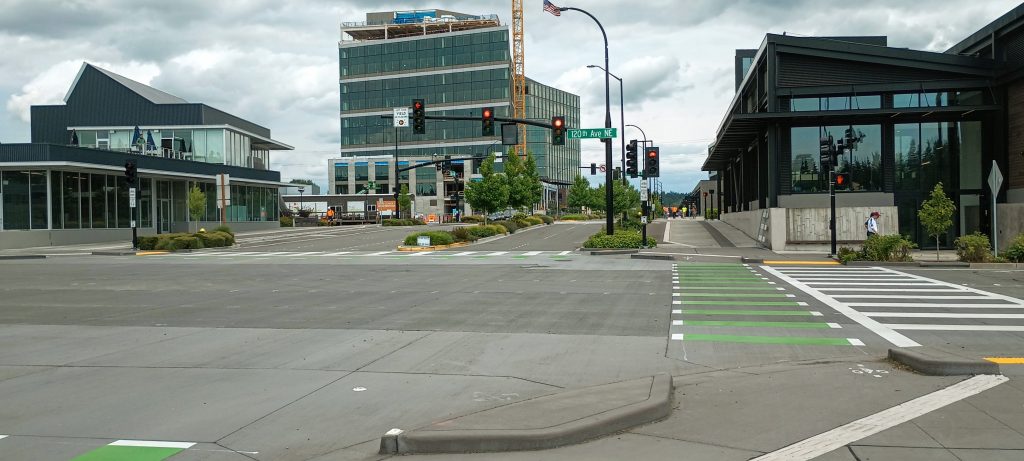
After years of delays, Seattle is finally set to try out a pedestrian and bike safety countermeasure that’s been shown to provide big gains. The Seattle Department of Transportation (SDOT) has started soliciting bids for a long-delayed corridor improvement project in South Lake Union that will construct the first protected intersection in the entire city.
Protected intersections, which add more separation for people walking and biking by adding corner islands that slow down motorists, have become widely recognized as providing safety gains. But even as cities like Minneapolis, Portland, and Berkeley have added them, Seattle has been slow to incorporate them into its bike lane projects and intersection overhauls.
The planned protected intersection will be at Thomas Street and Dexter Avenue N, the same intersection where Seattle police officer Kevin Dave struck and killed 23-year-old Jaahnavi Kandula in a crosswalk this past January. As reported by PubliCola, Dave was traveling at 74 miles per hour responding to what was believed at the time to be an overdose call. Dave is still employed by the Seattle Police Department, with the King County Prosecutor’s office expected to make a decision on whether to charge him with a crime later this month.

The protected intersection is one element of a corridor improvement project along Thomas Street, one that Mayor Bruce Harrell diverted funding away from in his first budget last fall. As a result, instead of a permanent diverter plaza at 5th Avenue N, city crews will instead construct a quick-build plaza with some street furniture separately from the work being bid closer to Dexter Avenue N. Funds to fully upgrade this to something lasting and more durable will need to be found elsewhere. But for now, the plaza will serve its primary function of diverting vehicle traffic trying to use Thomas Street as a cut through. Both the temporary plaza and the permanent improvements around Dexter are set to be installed this fall, barring delays.

A revamp of Thomas Street has been in the works for many years. The city’s 2014 Bicycle Master Plan identifying it as an important east-west corridor connecting Seattle Center with key north-south bike routes like Dexter Avenue N, 9th Avenue N, and Eastlake Avenue E. A 2013 concept plan had outlined way that street frontages could be upgraded as part of a “green street” designation, but that plan fell short of taking advantage of the opportunities available on the street.
In 2019, outgoing Councilmember Sally Bagshaw, along with her legislative aide Dan Strauss, hosted a “charrette” to create an up-to-date design. Adding a protected intersection at Dexter came out of that process as a primary design element, as did the idea of closing Thomas Street to through traffic just east of the Seattle Center, creating a pedestrian plaza that will also function as a diverter for a wide swath of the street.

The first mayor to divert funding for the project was Jenny Durkan, with Thomas Street included in a long list of projects put on pause in mid-2020 when city revenues were in free-fall. That fall, the city council passed a budget amendment specifically allocating $777,000 to the project. When Mayor Harrell cut funding for the project yet again last fall, SDOT reconfigured the design to be able to take advantage of existing funds.
The fact that Seattle hasn’t joined other forward-thinking cities in implementing protected intersections at all, much less broadly across its bicycle safety projects, is notable. Nearby Bellevue, making steady gains in expanding its protected bike lane network, built its first protected intersection in the Spring District nearly three years ago.

The National Association of City Transportation Officials (NACTO) has included protected intersections in their urban bikeway design guide for many years now, including the concept centrally in their bluntly named design manual Don’t Give Up at the Intersection. But many of Seattle’s latest proposals for key segments of the bike network aren’t including any intersection protection at all, with separated signal phases keeping people on bikes away from drivers turning left or right even becoming a luxury in Seattle’s bike projects.
Hopefully Seattle’s first protected intersection will not remain a novelty for long.
Ryan Packer has been writing for The Urbanist since 2015, and currently reports full-time as Contributing Editor. Their beats are transportation, land use, public space, traffic safety, and obscure community meetings. Packer has also reported for other regional outlets including BikePortland, Seattle Met, and PubliCola. They live in the Capitol Hill neighborhood of Seattle.

